
Prenzlau: Sights and tips for the historic capital of the Uckermark
Advertising: Contribution in cooperation with the German National Tourist Board e.V.
In the northeast of Brandenburg, less than an hour from Berlin, lies one of the most sparsely populated regions in Germany – the Uckermark. Here you can expect a sublime expanse, tranquility and large protected natural landscapes. The historic “capital” of the Uckermark is also contemplative. If you come to Prenzlau, you will find the perfect environment for active and at the same time relaxing holidays.
After the visit to the state capital Potsdam, Prenzlau was the second stop of our one-week Brandenburg tour. And I can tell you one thing at this point: I really liked it in the small town idyllically located on Lake Unteruckersee. What awaits you in Prenzlau and which sights you should not miss in my opinion, you can find out in the following lines.
Nice and relaxed – Prenzlau in the Uckermark
Prenzlau, whose name, like most of you, would have associated with Berlin’s trendy district of Prenzlauer Berg rather than with a small town in the triangle between the Baltic Sea, Szczecin and Berlin, looks back on a proud, almost 800-year history as the center of the Uckermark. In the Middle Ages, it was even one of the largest cities in the Mark Brandenburg. Like many other German cities, however, the Second World War also led to a turning point in Prenzlau. Large parts of the city were destroyed by attacks in April 1945.
And so Prenzlau today presents itself visually as a city of contrasts; impressive brick Gothic buildings are located in the immediate vicinity of prefabricated housing estates from the GDR era. Most of Prenzlau’s sights are located in the old town centre, which stretches between the city park and the Unteruckerpromenade over four cross streets. Prenzlau is a stage stop on the popular long-distance cycle route Berlin – Usedom and a member of the “European Route of Brick Gothic” association.
1. Climb the landmark of Prenzlau
The magnificent brick-red, almost 70 m high towers of St. Mary’s Church are the first thing we see on the way to Prenzlau. It is the city’s landmark and is located right next to the “Marktberg” in the centre of the city centre. It was also almost completely destroyed during the fighting in the last days of the Second World War. Fortunately, in 1970, the authorities decided to rebuild it. Otherwise, you wouldn’t be able to put your fitness to the test today when climbing the tower (234 steps await you) or enjoy the wonderful view over Prenzlau and the Unteruckersee from there.
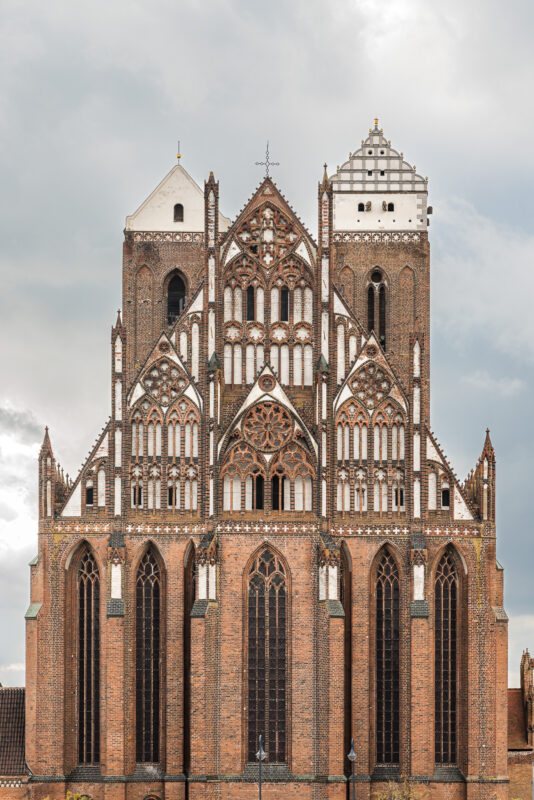
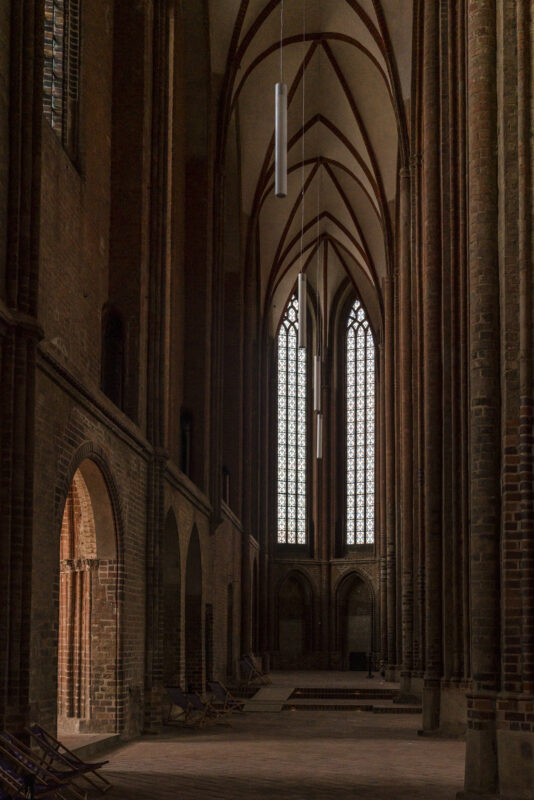
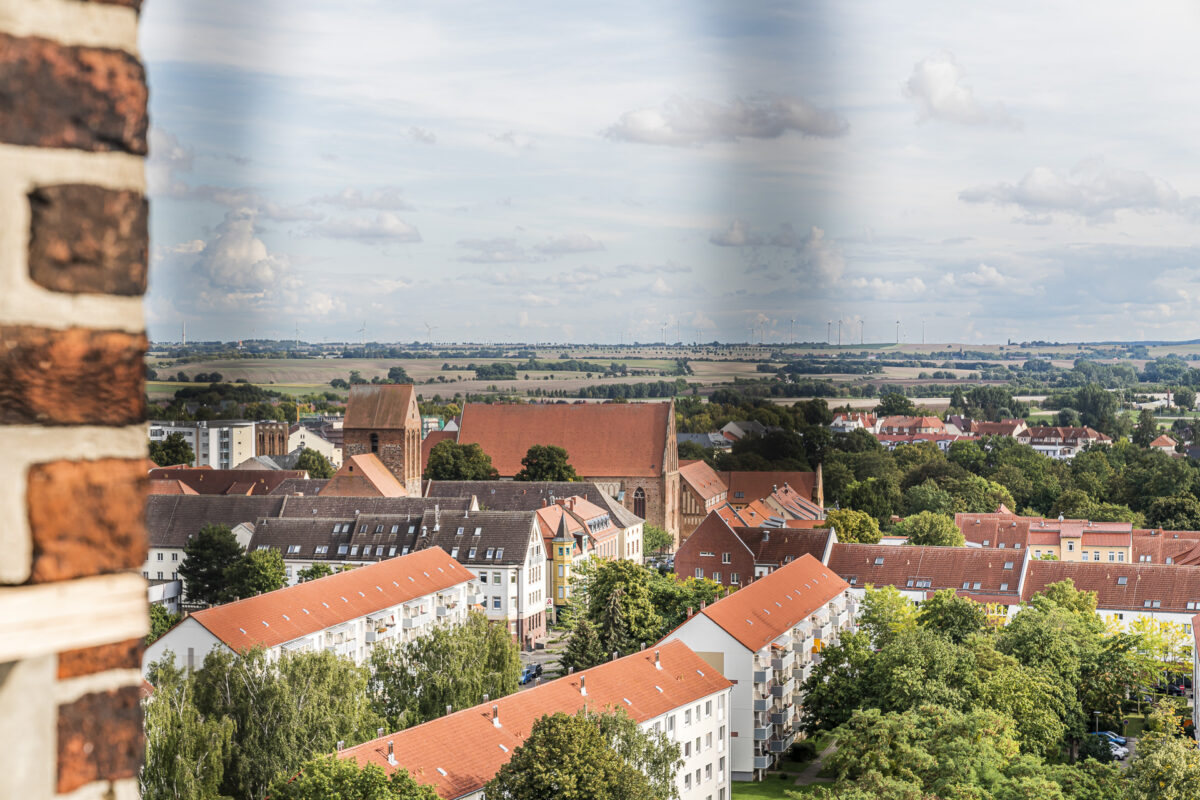
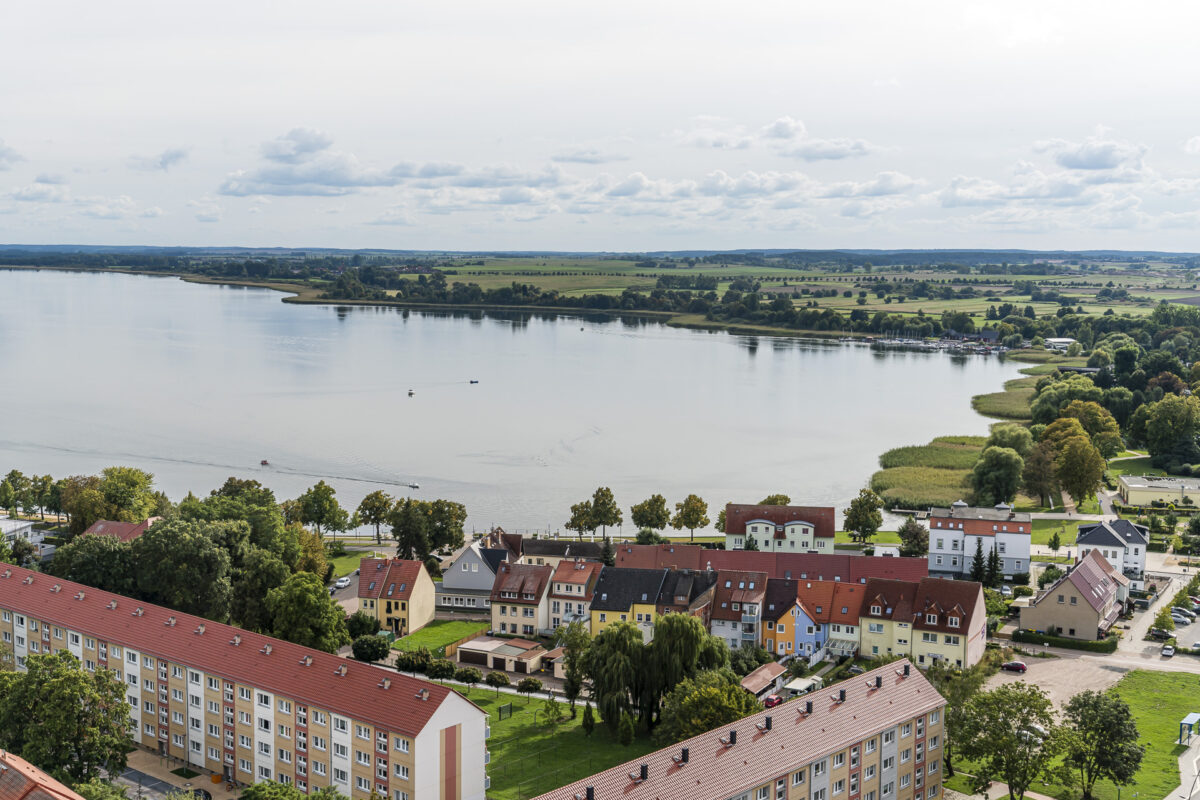
The tower can be climbed daily from 11:00 a.m. to 5:00 p.m. during the summer months (last ascent 4:30 p.m.) and costs 2 euros.
2. Learn more about the city’s history at the Dominican monastery
A comprehensive and well-prepared overview of the eventful city history of Prenzlau is offered by the Cultural History Museum in the complex of the former Dominican monastery. This is also a building from the Brick Gothic period and one of the best-preserved monasteries in northern Germany. From Tuesday to Sunday, you can also enjoy very fine cakes and locally squeezed juices in the KlosterCafé right next to the museum. Definitely worth a stop!
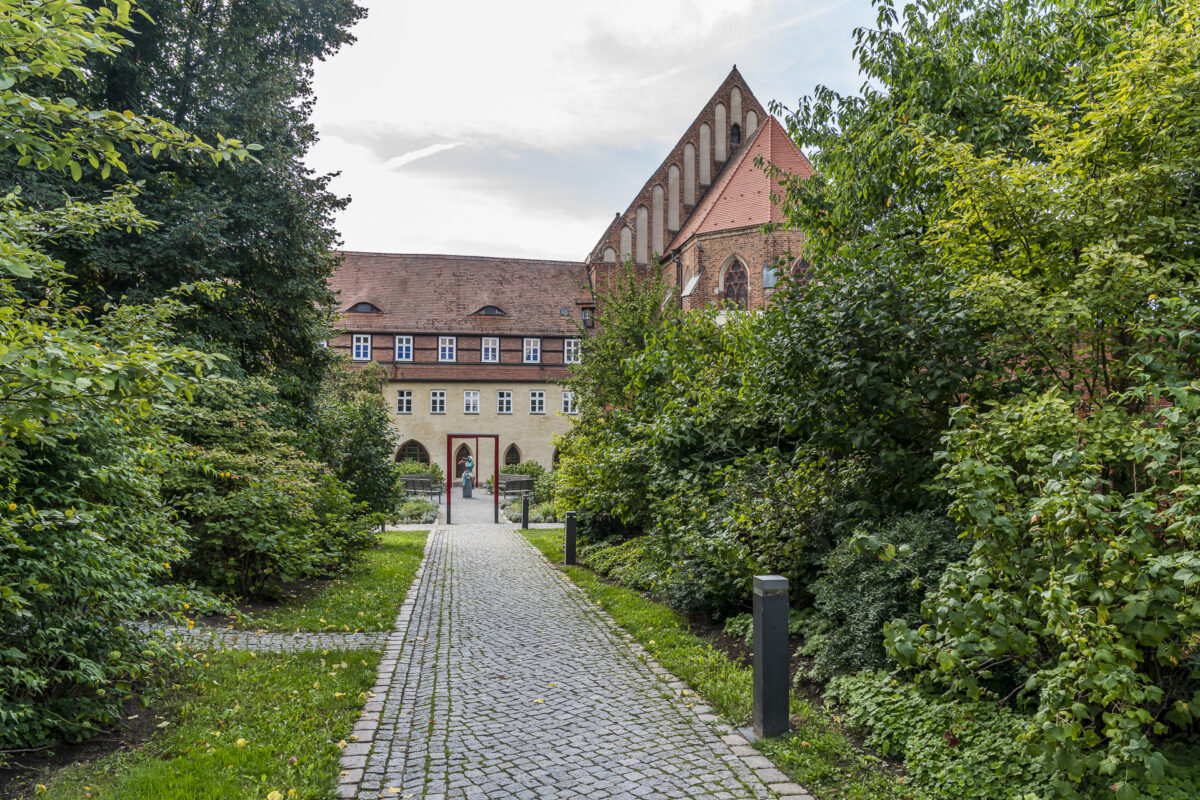
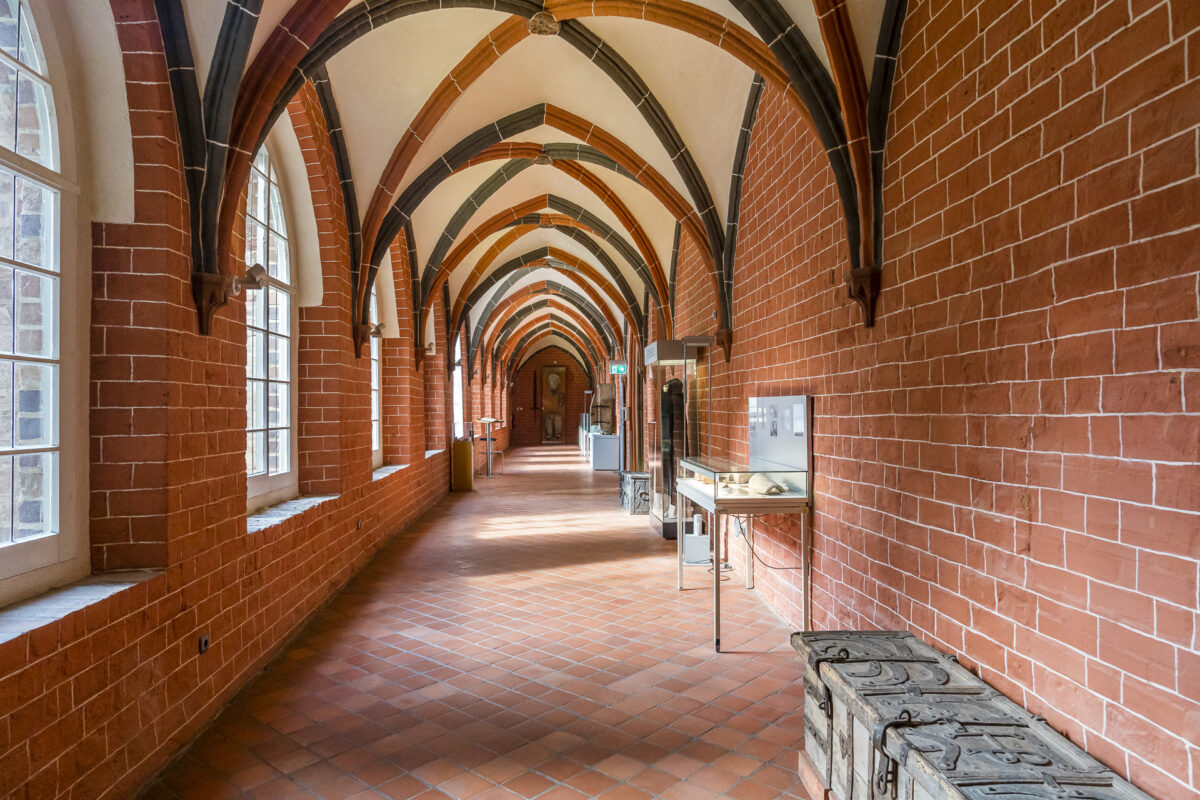

Further information on opening hours and admission prices: Dominican Monastery Prenzlau
3. Walk around the old town on the city wall circuit
Like many medieval cities, Prenzlau was surrounded by a city wall. Of the original 2.6 km long city wall, just over a kilometre has now been preserved and renovated. These can be experienced on the so-called “City Wall and Trail“. In my opinion, the most beautiful section stretches along the city park and then from the Dominican monastery along the Uckerwiek to the Uckerpromenade.
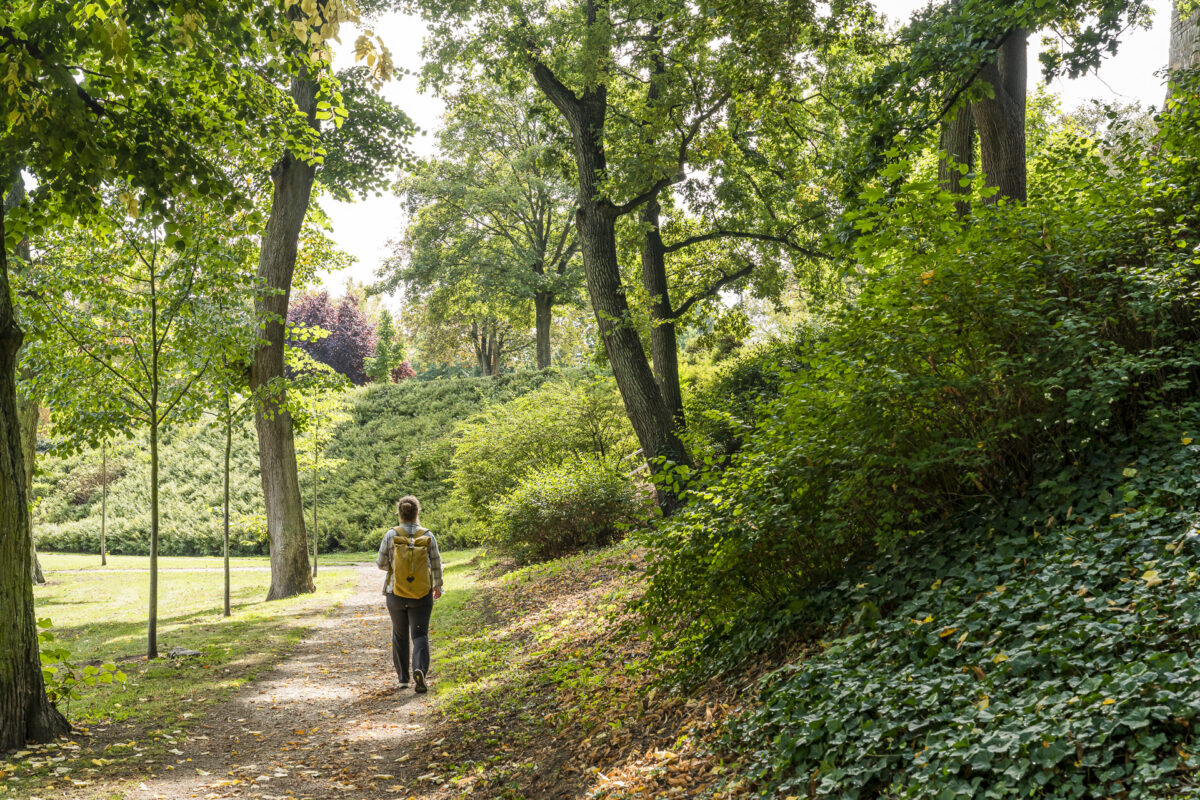
At the intersection Am Steintor/Uckerwiek there is also another opportunity to let your gaze wander over the rooftops of Prenzlau. The Steintor Tower, which is used as an archive by the Uckermark Historical Society, is usually open on Saturday and Sunday afternoons during the high season in summer (July/August). The best thing to do is to inquire directly at the city and tourist information office on the Marktberg about the current opening hours.
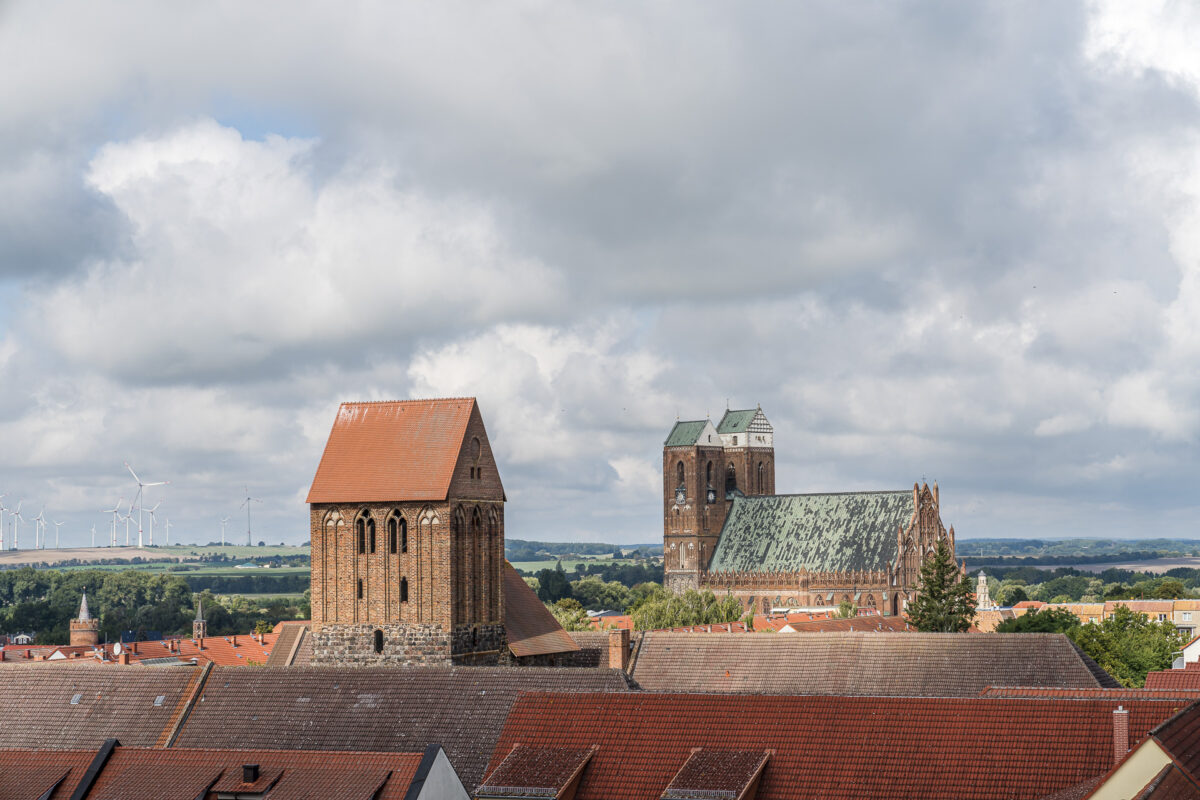
The area between the Uckerwiek and the lake owes its current design to the State Garden Show of 2013. Really successful – especially the beautiful, accessible lakeshore with its numerous seating areas that invite you to linger. Along the circular route of the city wall, you will also discover one or two signs with Low German expressions. This is one of several measures to preserve and promote Uckermark Low German as a regional language.
If your stomach growls after this walk, I recommend a stop at the secluded backyard garden of Lew Bio – an unconventional café integrated into an organic shop with an inexpensive lunch menu.
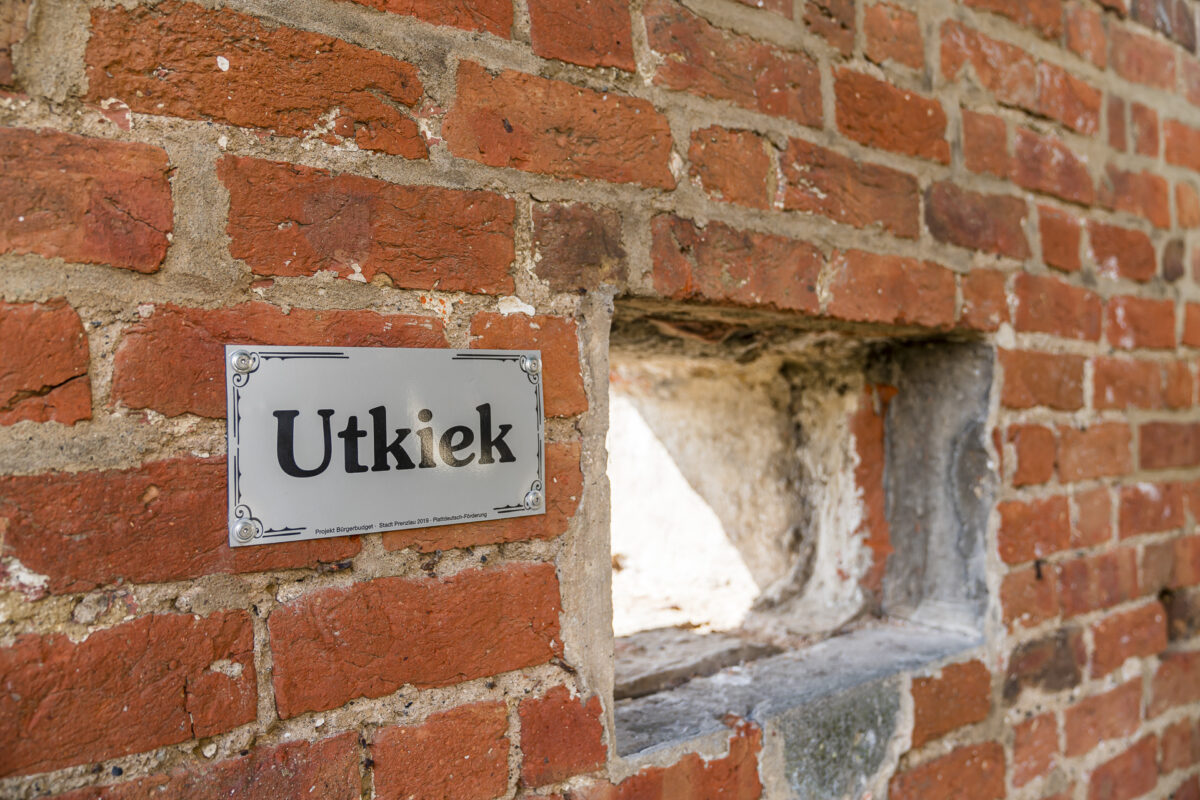
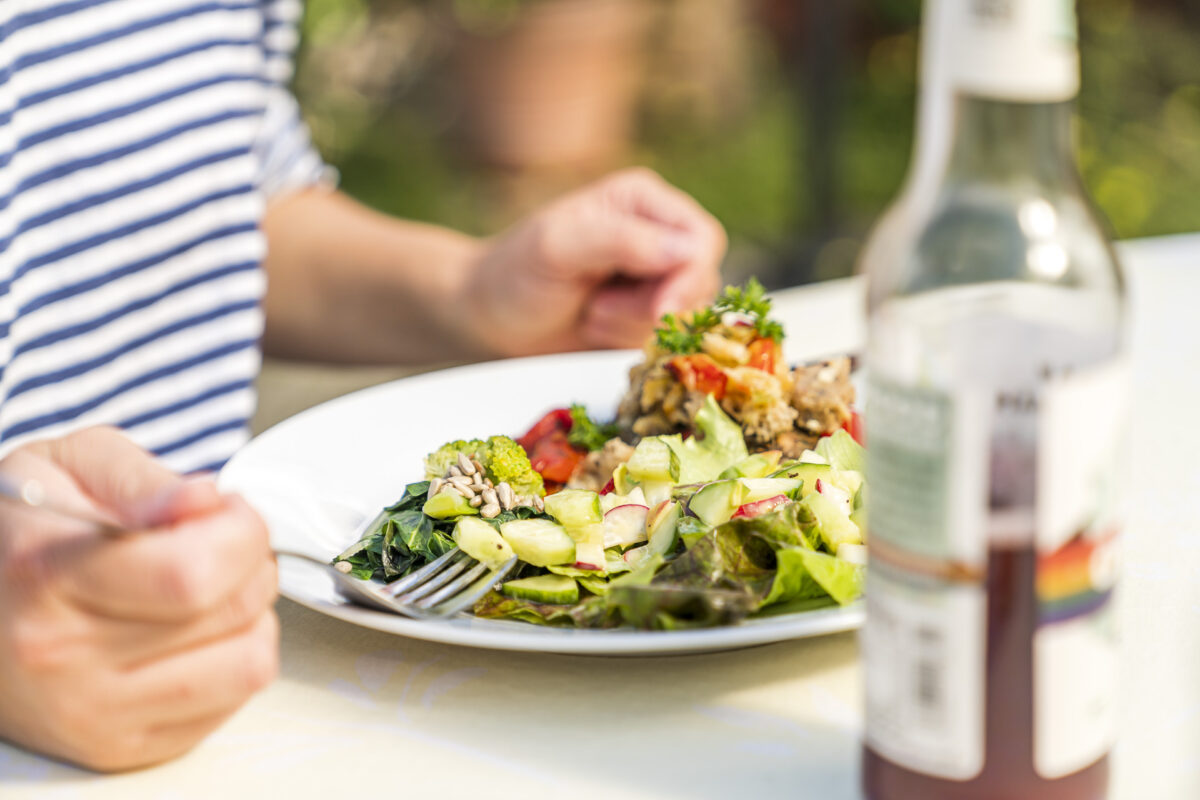
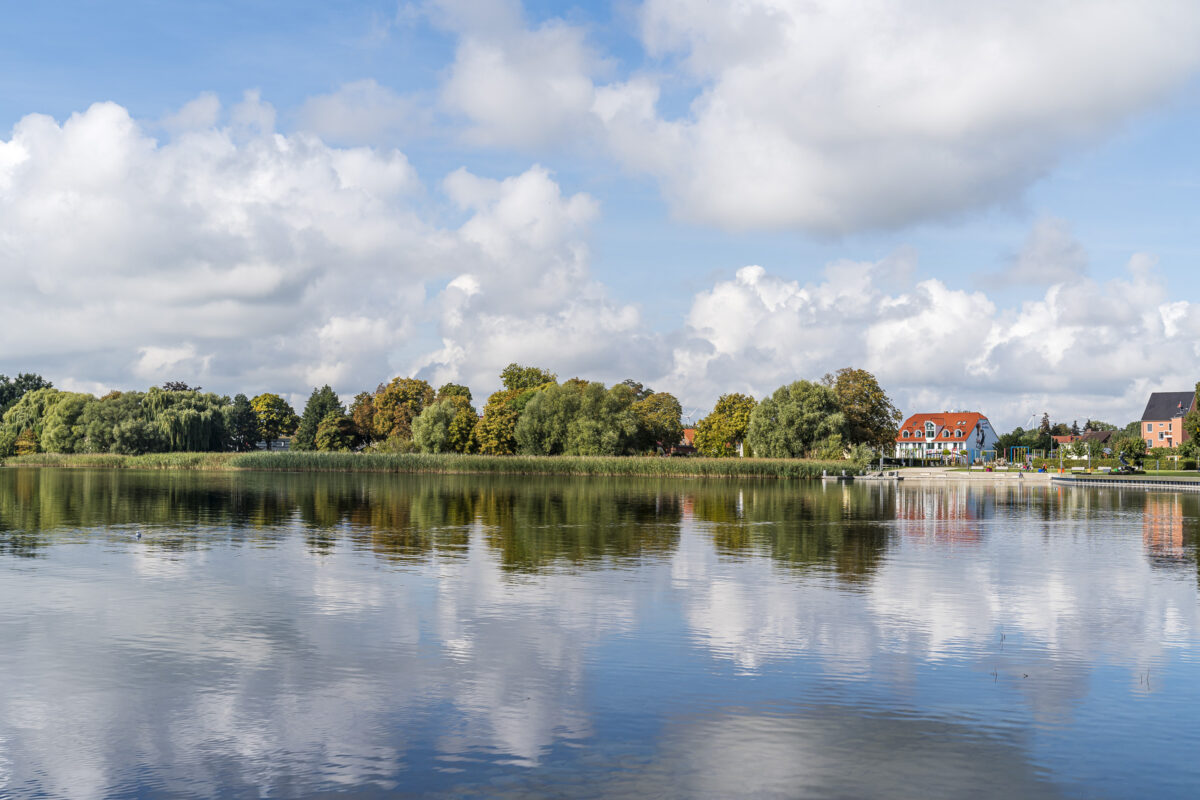
Practical info: On this map (pdf format) from Prenzlau Tourismus you can see the course of the historic city wall (red bar line)
4. Try out new water sports on Lake Unteruckersee
Especially in the summer months, the Unteruckersee with its hidden bays is THE attraction par excellence. But even in the low season, there are various ways to experience the lake. In addition to stand-up paddling and canoe tours (including multi-day ones), adventure seekers can also try out water sports that are not yet so well known. On the recommendation of Tourismus Uckermark, we tried e-foiling.
E-foils are electrically powered surfboards that allow you to “fly” over the water regardless of the wind. Admittedly, I was skeptical and curious whether a two-hour course would be enough to experience the gliding sensation. Under sympathetic step-by-step instructions from eFoil-Uckermark, I quickly managed to dash across the water on my knees. The friend turned out to be particularly talented; after less than an hour, he was already standing and drawing elegant circles across the lake. You can see what that looks like on Instagram in my story highlight “Brandenburg”.
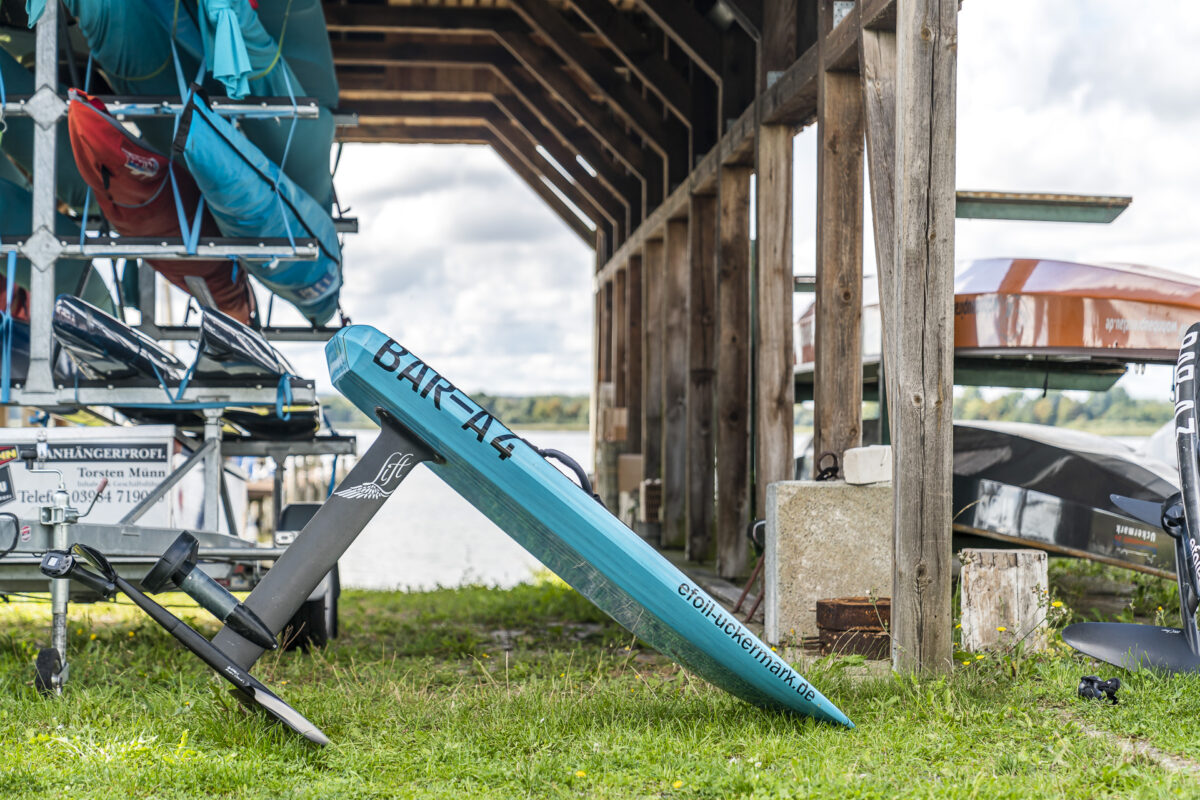
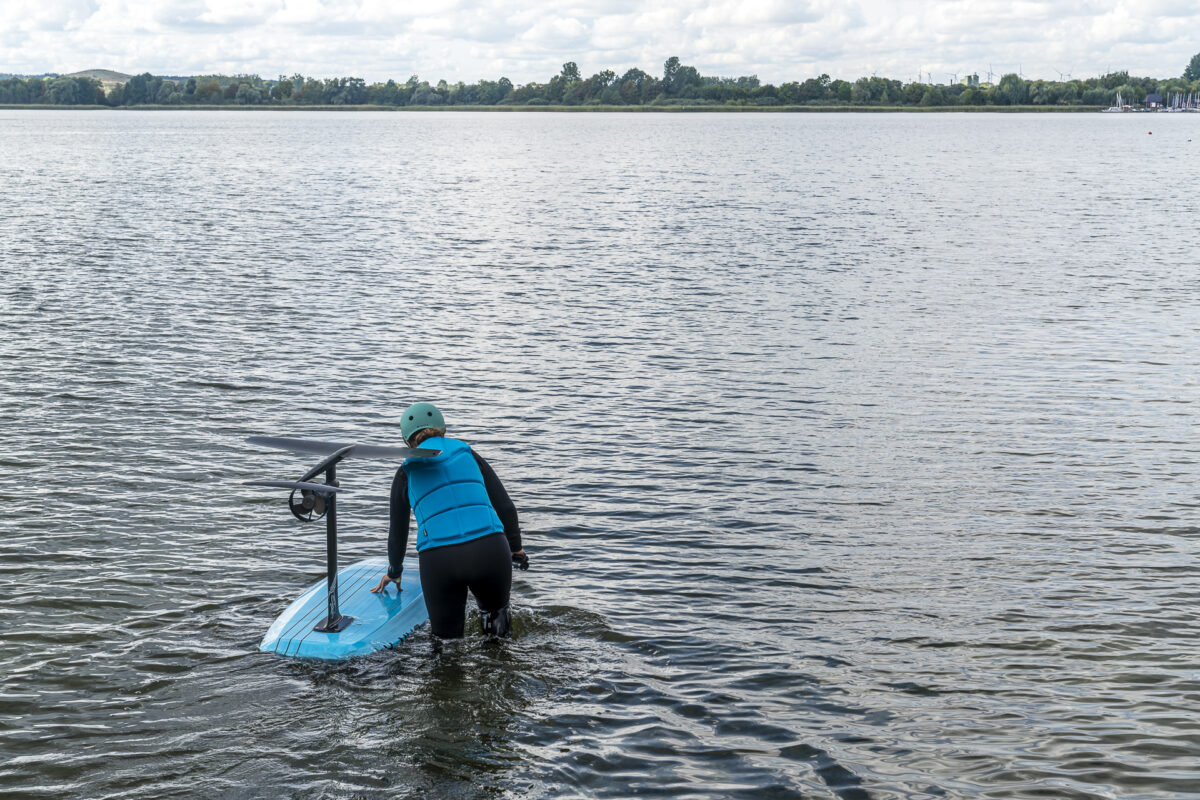
Two-hour beginner courses for two from 200 euros per person incl. equipment (e-foil, wetsuit, helmet and life jacket)| More info: eFoil-Uckermark
5. Enjoy the evening atmosphere on the Uckerpromenade
After this sporty afternoon program, we are a bit exhausted and are looking forward to a cozy end to the day with a view of the Unteruckersee. And what luck we have with the weather! A wonderful late summer evening with a fantastic sunset awaits us. And at the latest when you stop at the Balu Beach Bar, which is located directly on the Uckerpromenade, the holiday mood really comes up. If you like burgers (also vegetarian), this is the place for you.
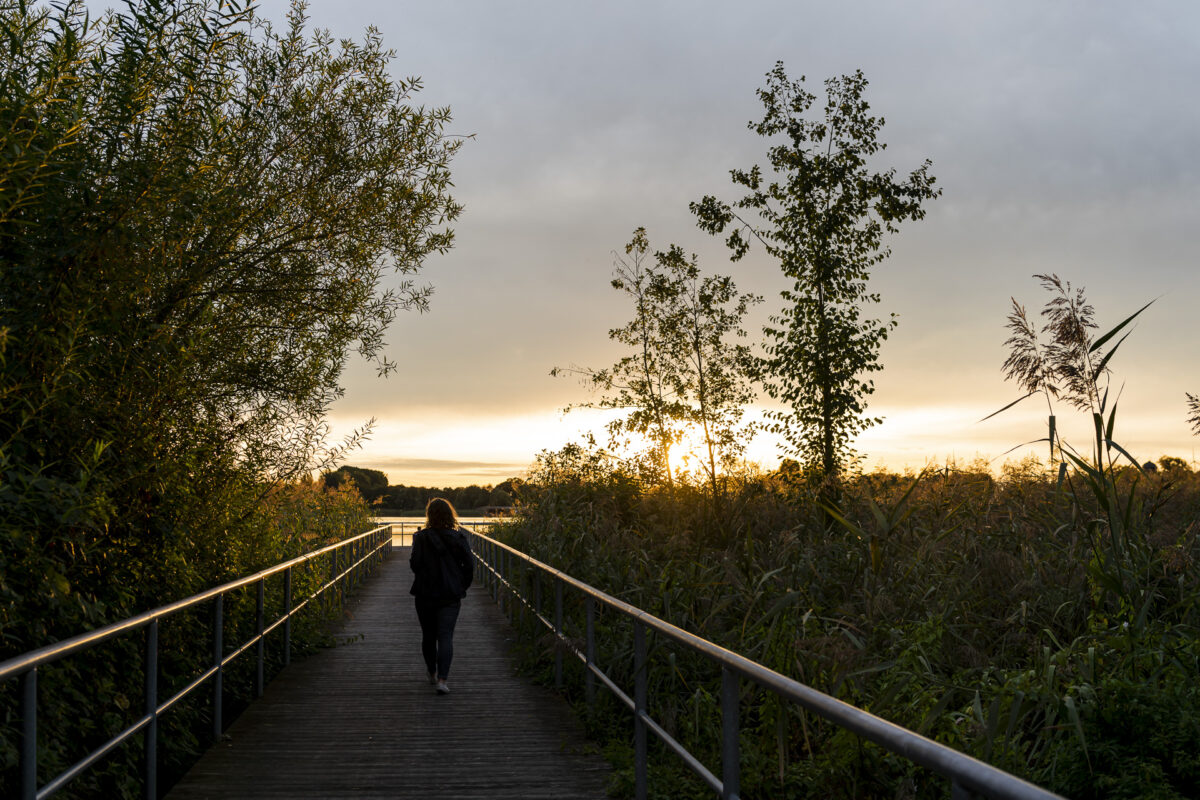
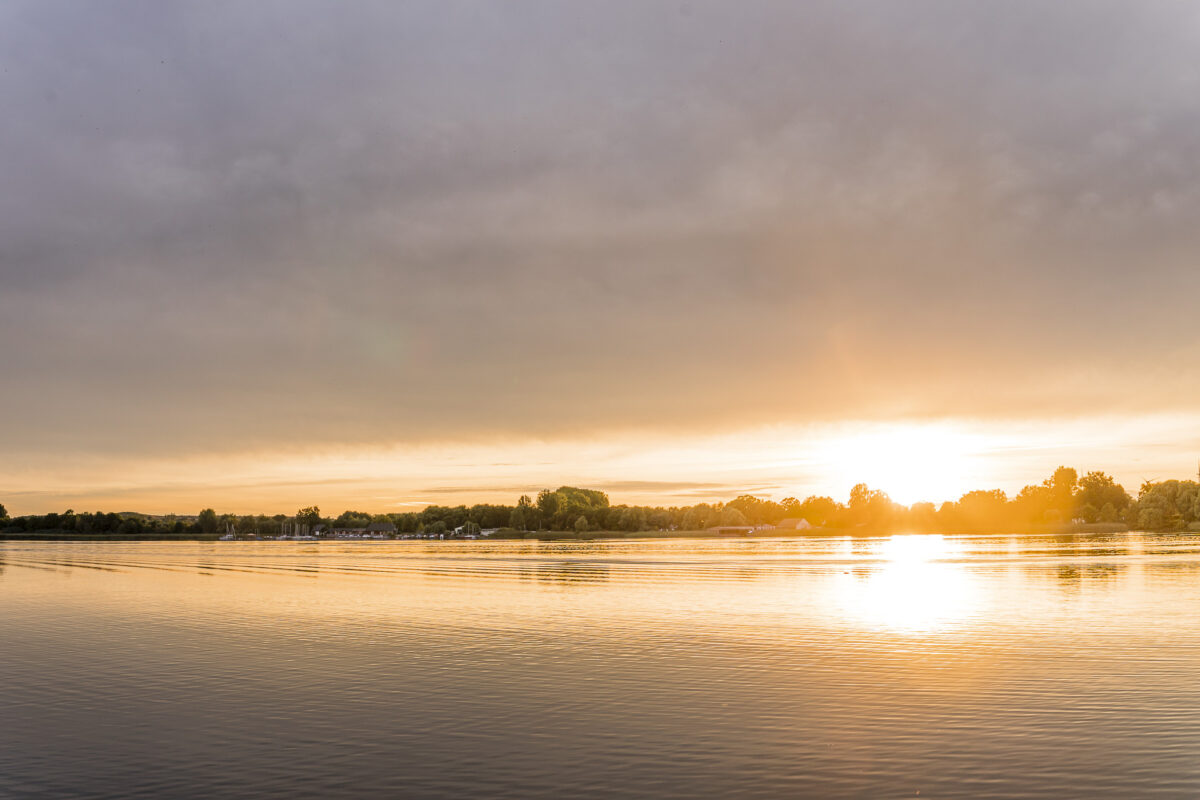
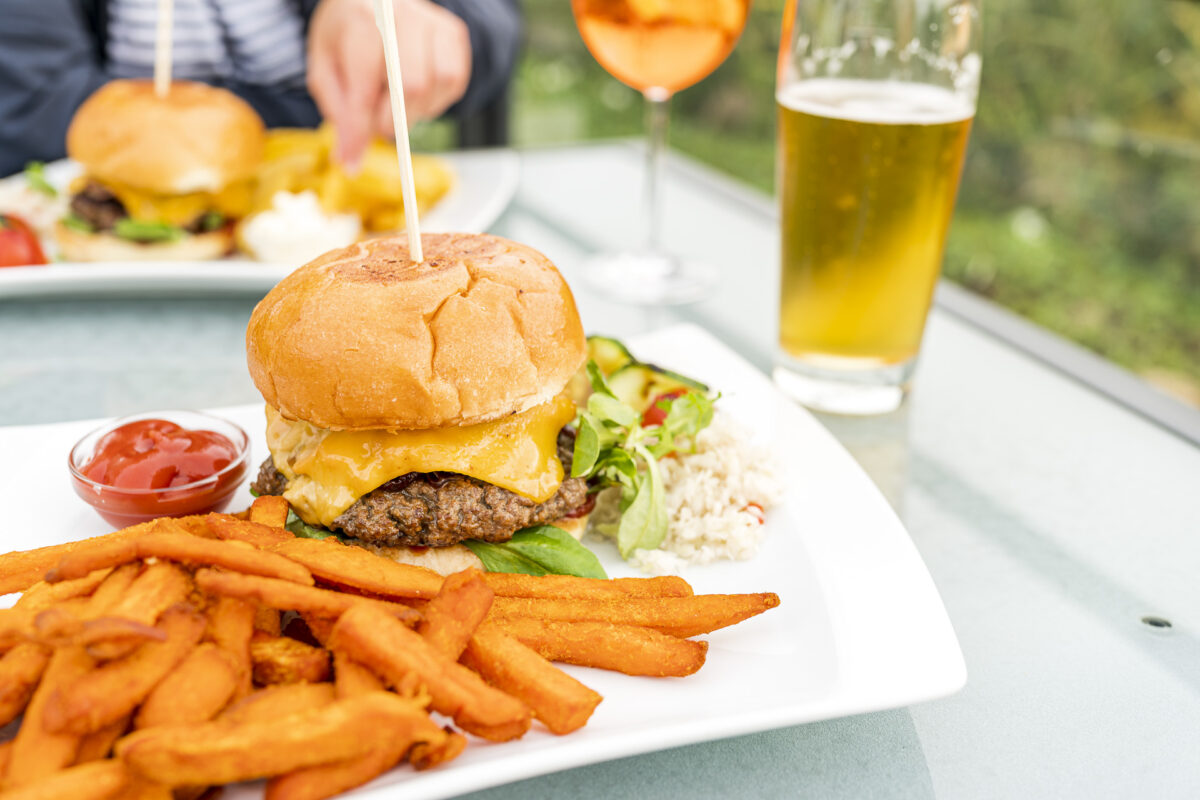
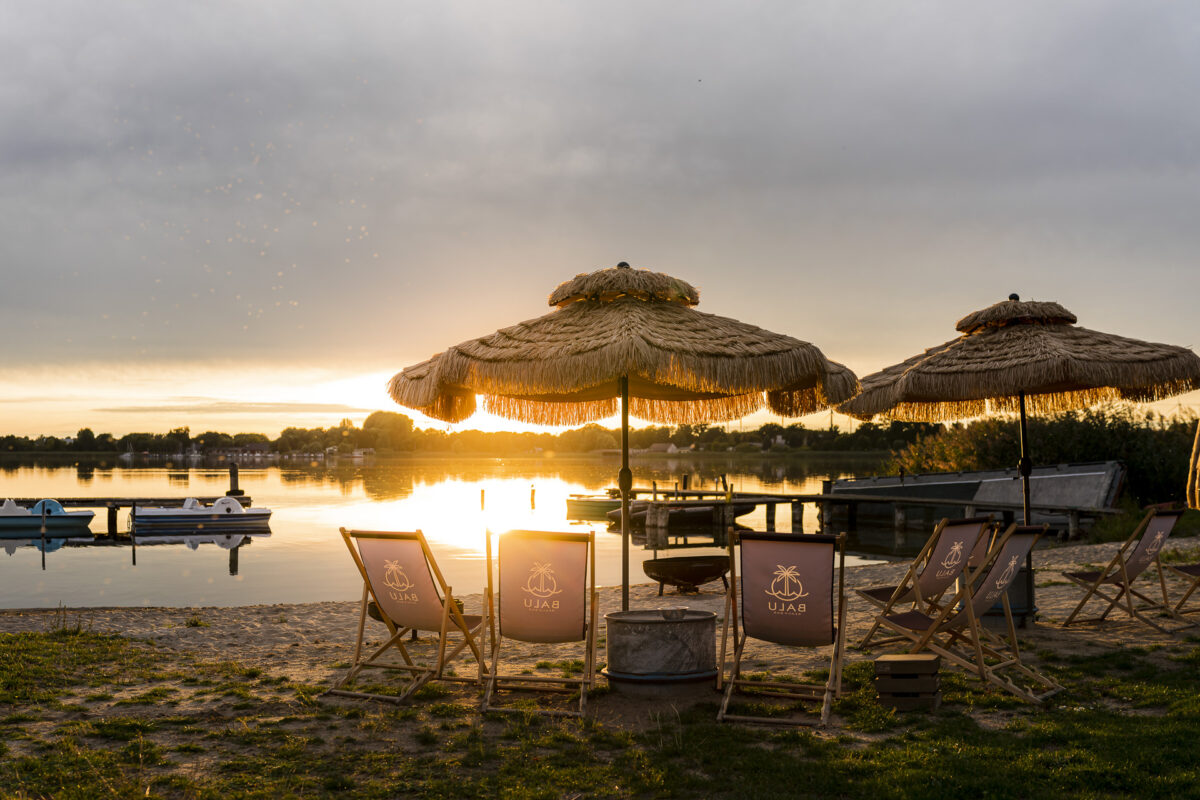
6. Spend the night in historic brick Gothic walls
In Prenzlau you can not only visit the historic city landmarks, but also spend the night in them. The central gate tower from the 15th century with the pump house added in the first half of the 20th century is now run as a guesthouse with a total of 3 double rooms and a family room. The rooms are designed with attention to detail. The location between Marktberg and Unteruckersee is also ideal for exploring the city centre of Prenzlau on foot. A really nice place to stay, which I can recommend to everyone – especially those of you with a flair for historic hotels.
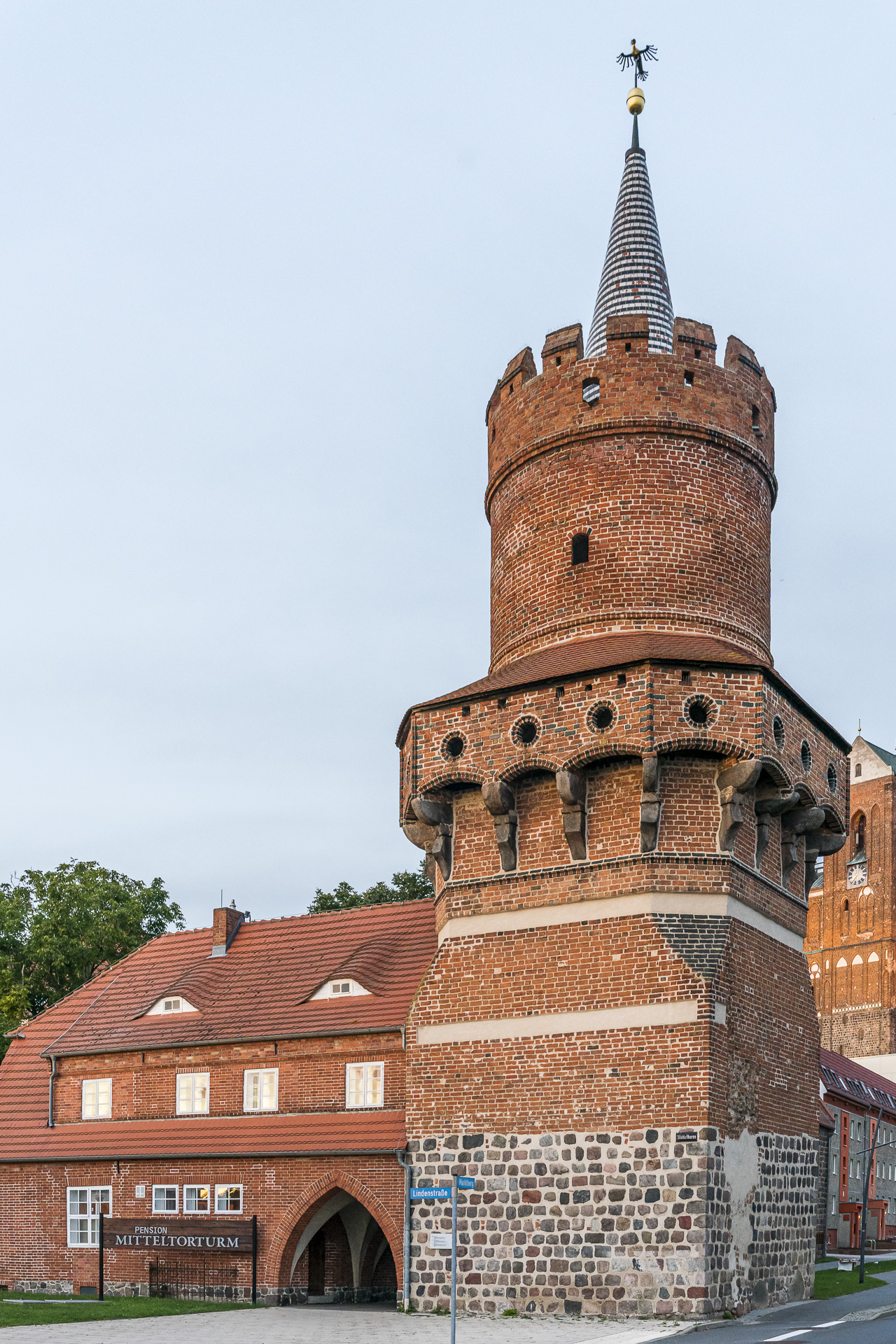
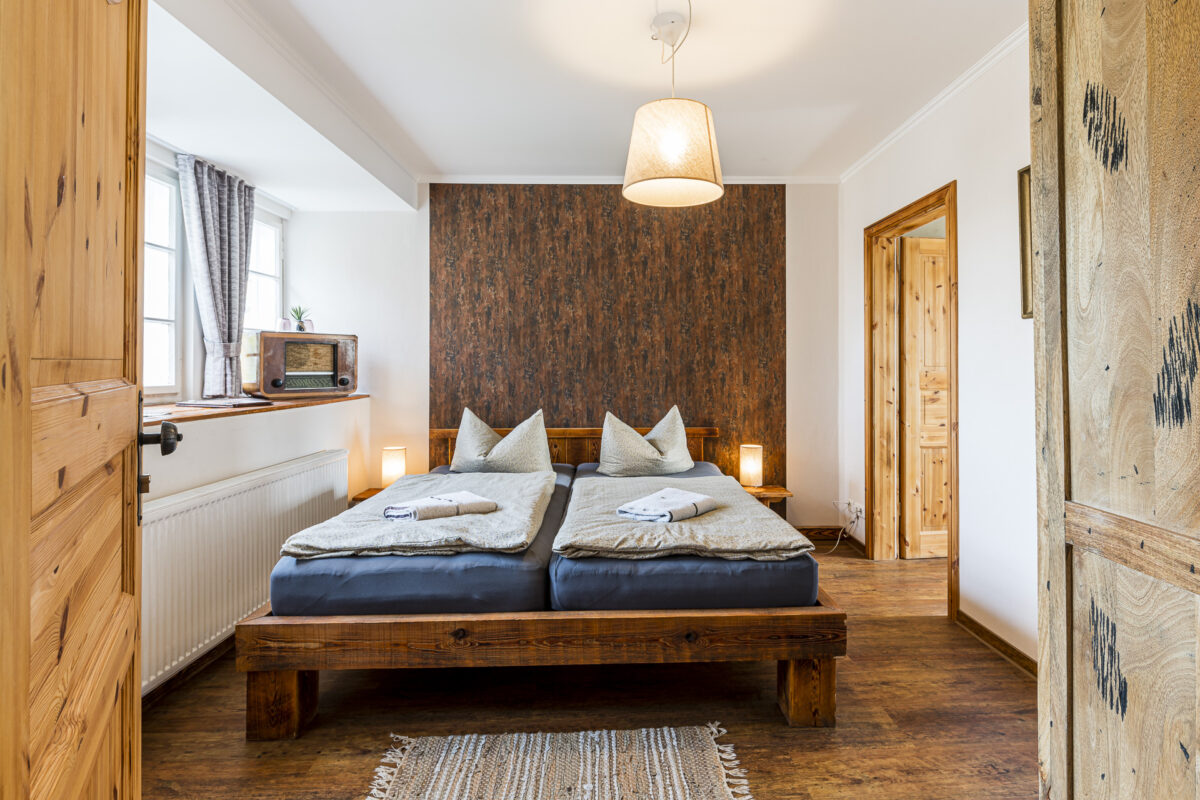
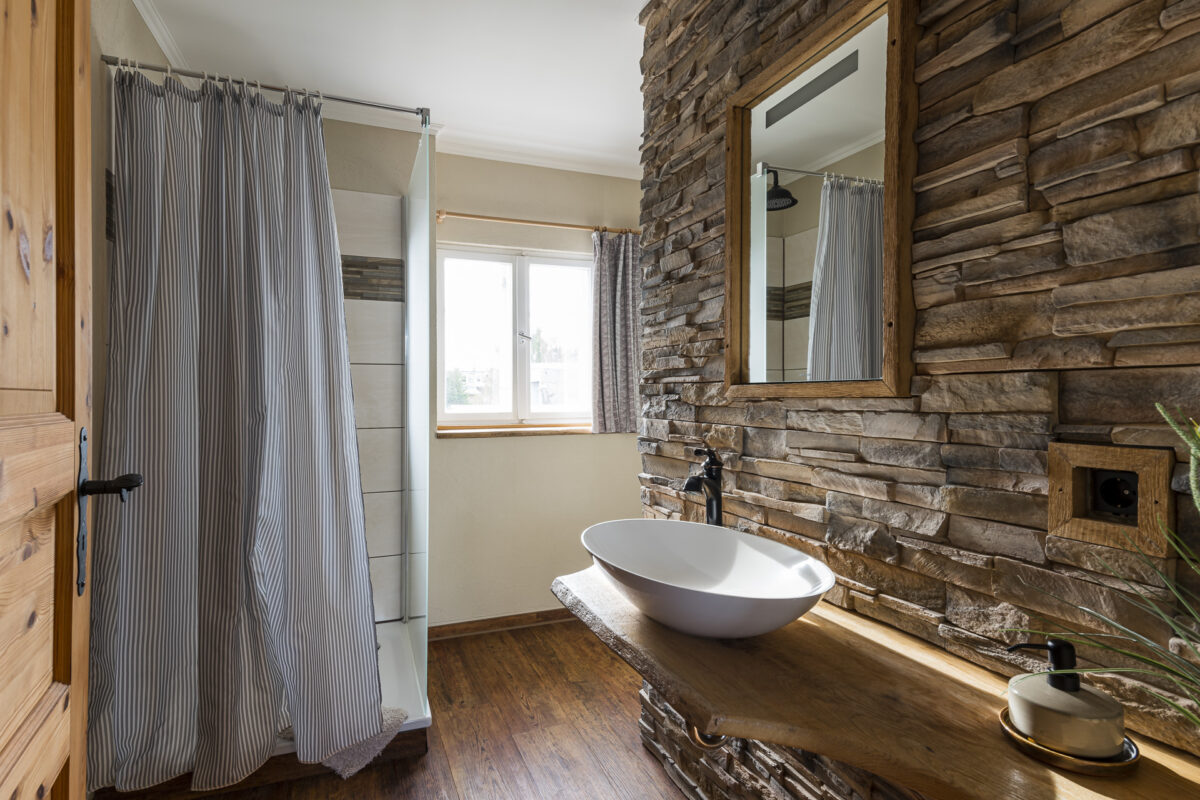
ps. breakfast is not served in the guesthouse. In this regard, I recommend a detour to the nearby Café Central on the Marktberg. It is open during the week as well as on Saturday from 7:00 a.m. and on Sunday from 8:00 a.m.
Room rate from 65 Euro per night | Further information: Pension Mitteltorturm
By the way: For architecture lovers, the Uckermark has a few more special holiday homes in store. Take a look at the map of Holiday Architecture (I’ve already reported on it). Southwest of Prenzlau, for example, there are some gems to discover (it’s worth booking early!)
7. Discover the Schorfheide-Chorin Biosphere Reserve
The Schorfheide-Chorin Biosphere Reserve begins about 50 kilometres northeast of Berlin and leads to Oberuckersee, south of Prenzlau. It encompasses one of the largest contiguous forest areas in Europe, including the Grumsin beech forest, which is classified as a UNESCO World Heritage Site. Another special feature are the many lakes (240 of them with a water surface over one hectare) and moors. The area is also interesting from a geomorphological perspective: formed during the Vistula Ice Age, all forms of a typical young moraine landscape can be found here.
To get an impression of the special flora and fauna, we meet with biologist Thomas Volpers at Seehausen train station. The certified nature and landscape guide also offers individually guided tours in all three National Natural Landscapes of the Uckermark. He leads us following the route of the Uckermärker Landrunde over winding, partly overgrown forest, field and meadow paths to Warnitz. An entertaining, almost three-hour hike, during which we dive really “deep” into the Uckermark nature and quickly realize: the 1,200 kilometers of designated hiking trails are definitely not overcrowded.
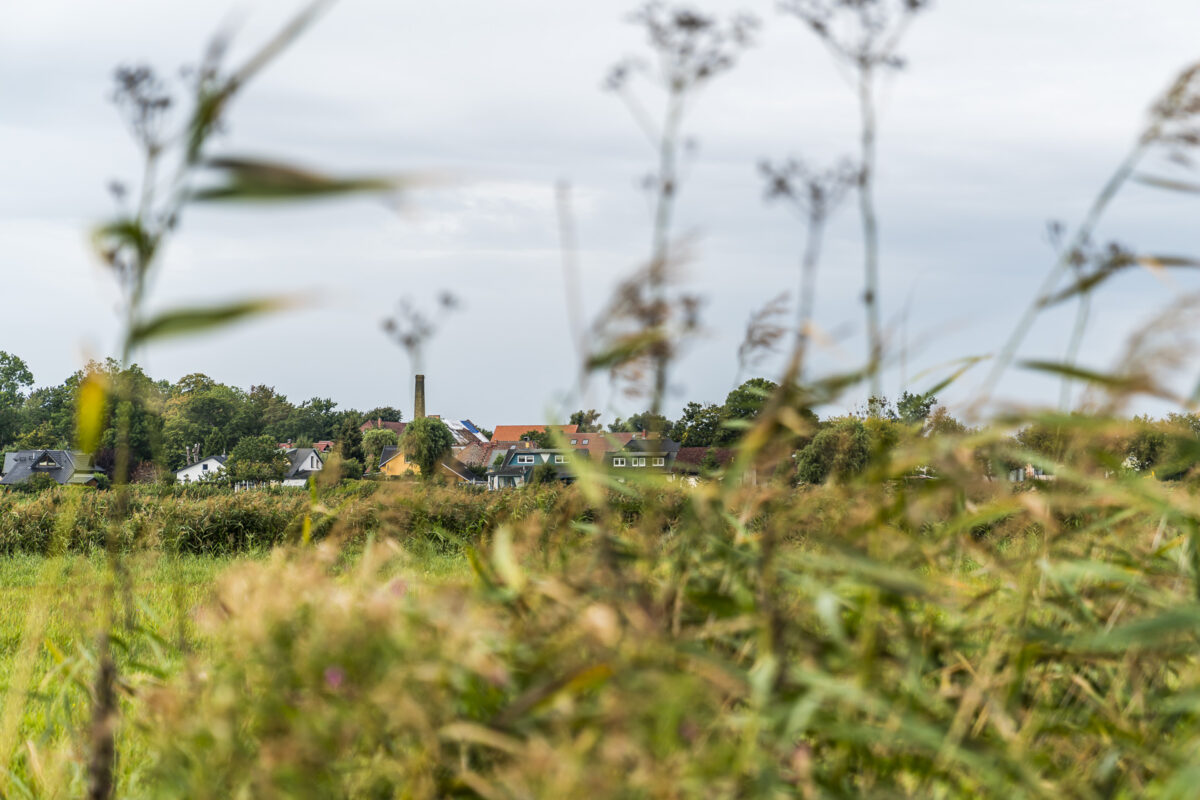
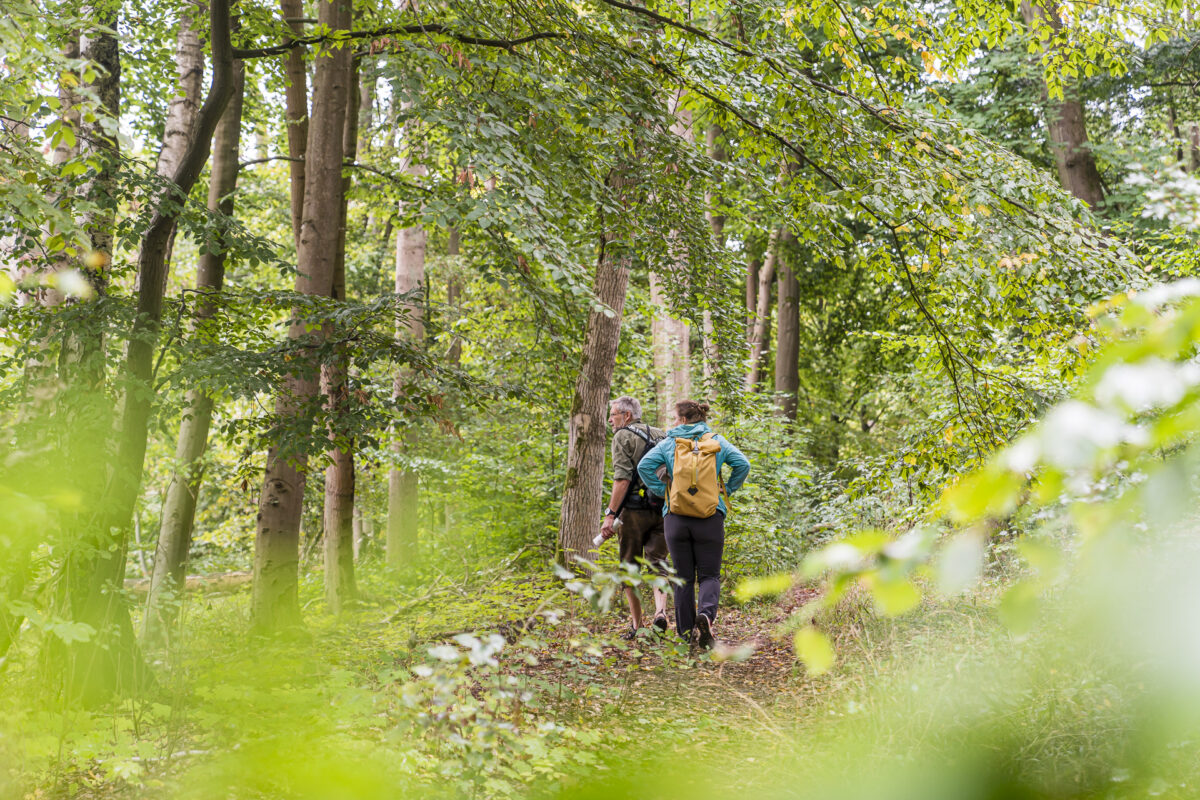

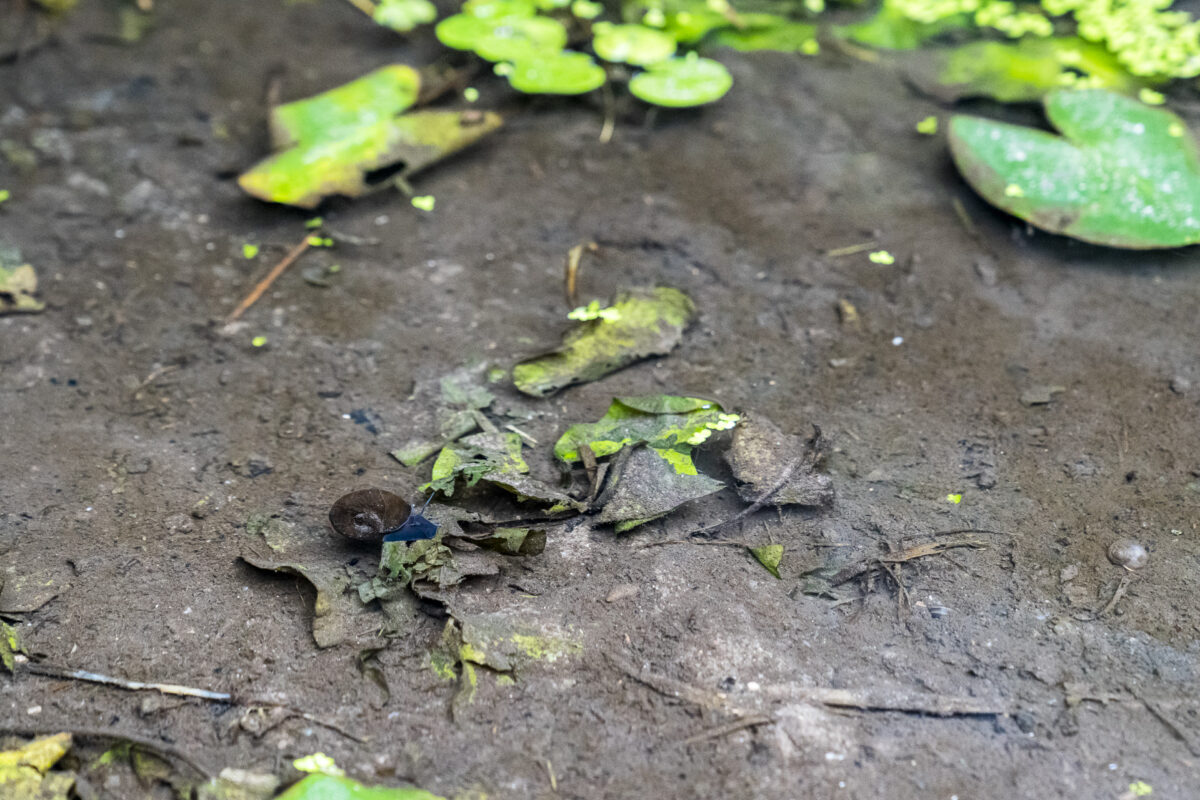
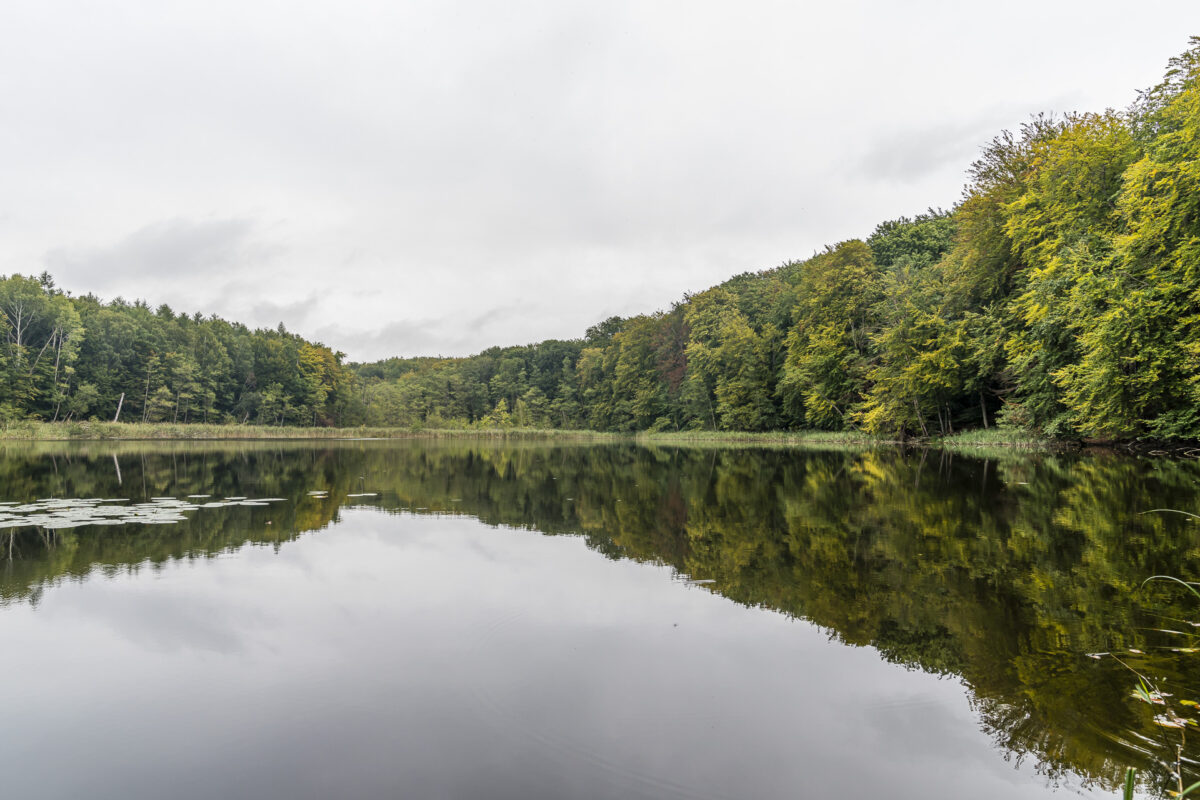
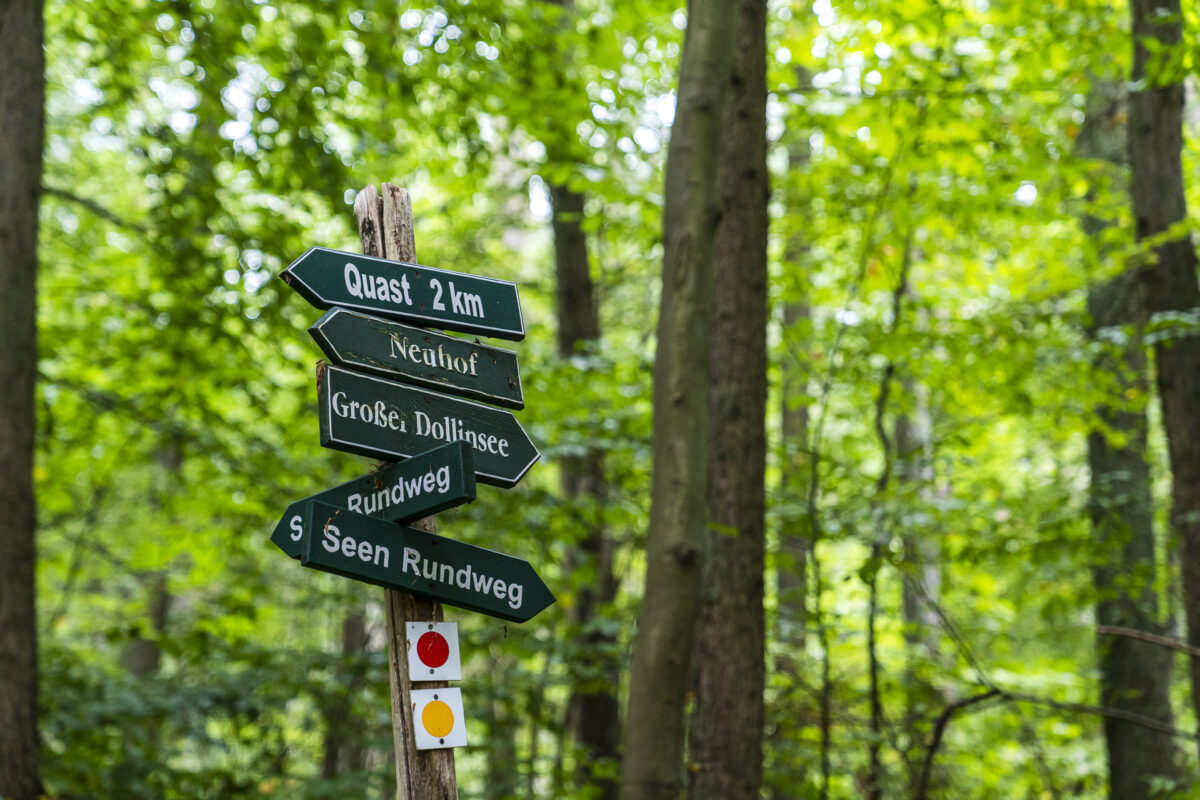
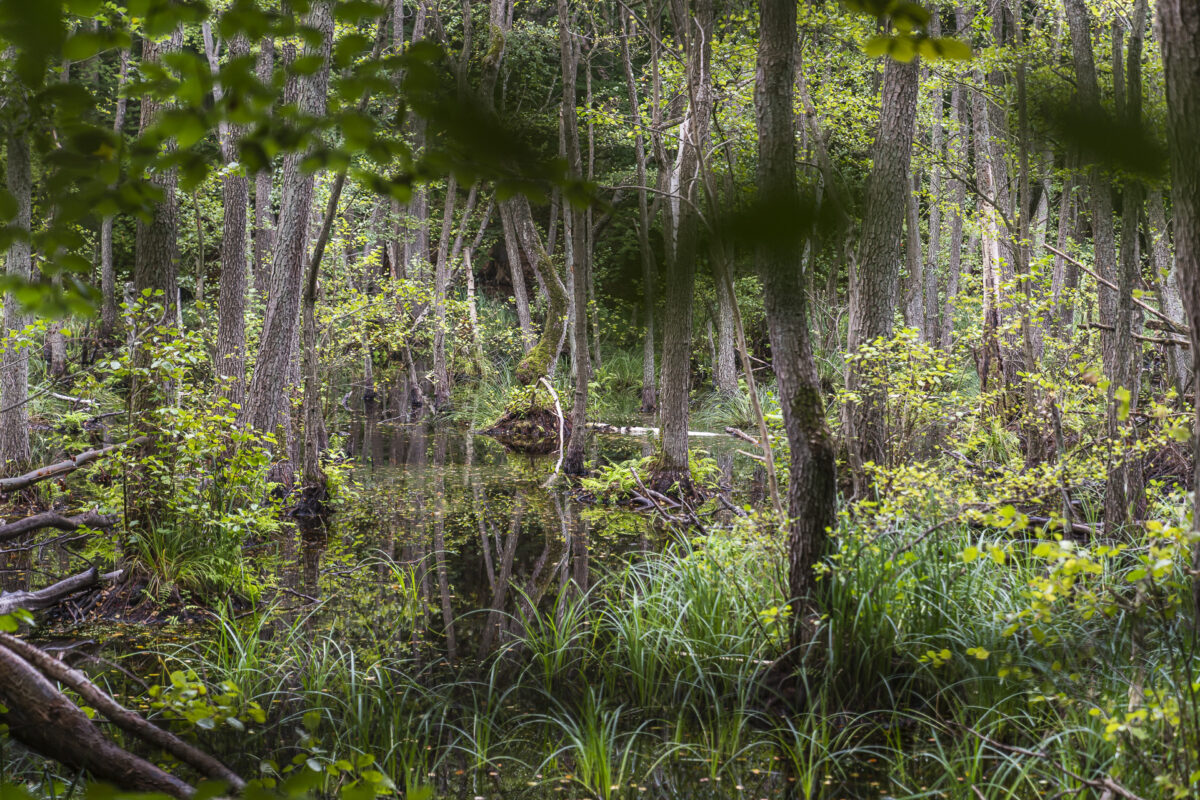
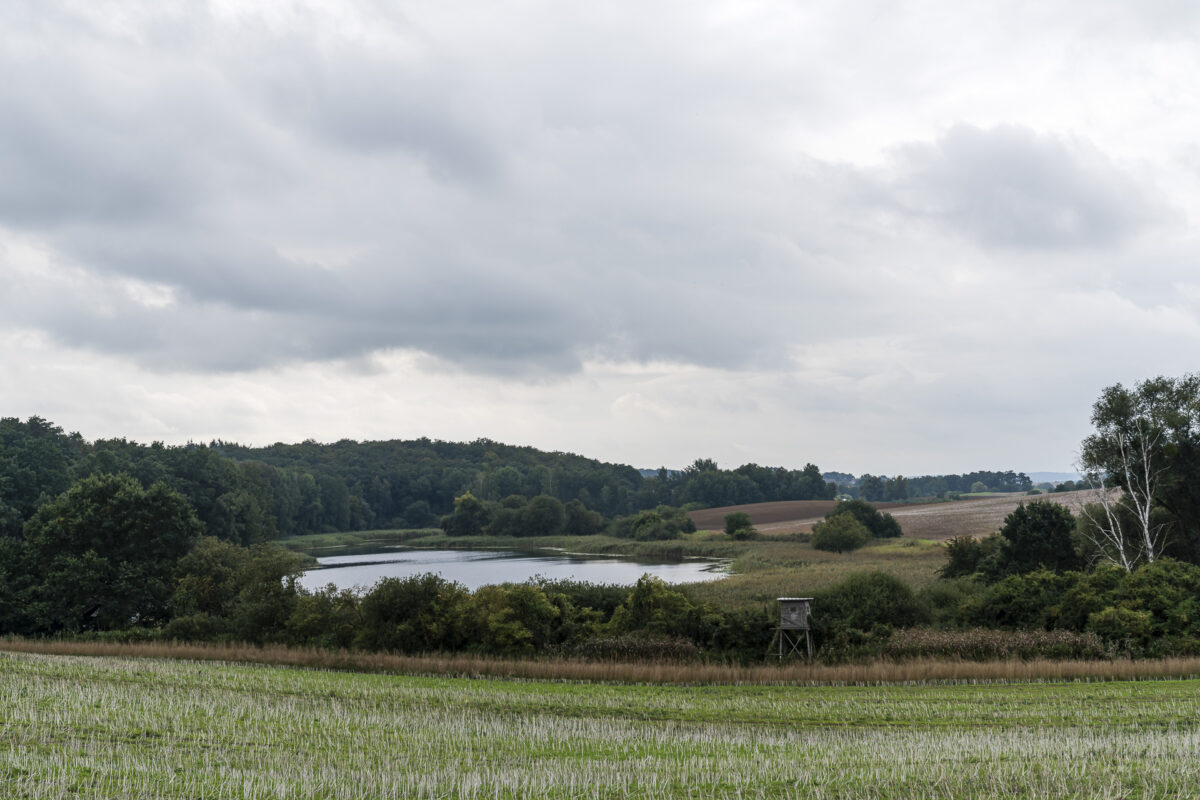
You can find more tips on beautiful regional hikes at Prenzlau Tourismus | An overview of all hiking trails in the Uckermark can also be found on the website of Tourismus Uckermark | More information and contact details about Thomas Volpers and his tours can be found here: UM Natur
The area around Prenzlau is not only easy to explore on foot, but also by bike. Unfortunately, we didn’t have the time to cycle the classic – the total of about 50 kilometers long lake tour around the Unteruckersee and Oberuckersee – ourselves. That’s why we have not only brought back tried and tested tips for you from these two days in Prenzlau, but also a lot of ideas about what else you could do here. Who knows, maybe we’ll be drawn to the Uckermark again soon.
More practical tips for your trip to the Uckermark
- Prenzlau can be reached from Berlin by train in just under 1.5 hours with the RE3 (Berlin-Stralsund connection), which runs almost every hour. It’s a little faster with the ICE connections to Rügen.
- The Uckermark is strongly committed to the promotion of sustainable tourism. In 2013, the region was the winner of the national competition “Sustainable Tourism Region” and has been certified as a sustainable tourist destination since 2018. The “Holidays for the Climate” network provides climate-friendly accommodation and leisure providers.
- For glamping fans, we recommend the Sonnenkap campsite, which is located directly on Lake Unteruckersee. Here you can spend the night in luxurious safari tents, among other things. In addition, the lakeside restaurant “am Kap” located here should be worthwhile. On the two days we were on site, it was unfortunately closed.
- If you want to learn more about hiking in the Uckermark, I can recommend reading the report on the Uckermärker Landrunde by Fräulein Draussen.
- Further information about the Uckermark and Prenzlau can be found on the website of Tourismus Uckermark and at Prenzlau Tourismus.



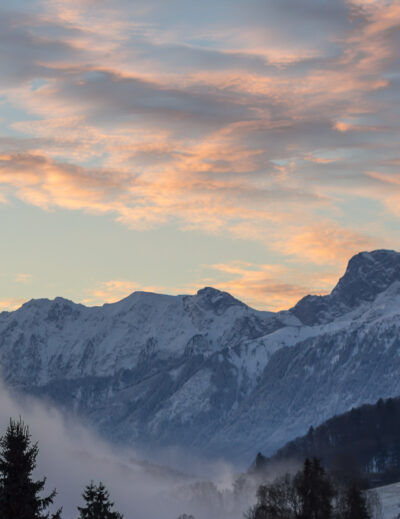

Pingback: The pipe organ is experiencing a resurgence | Helle Møller
27. July 2025